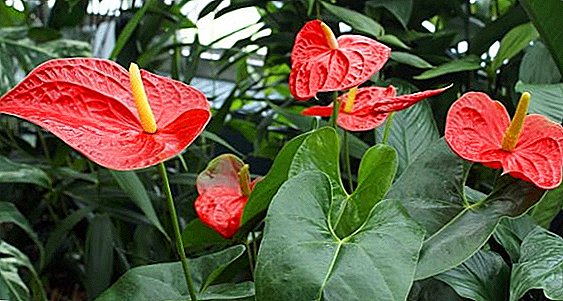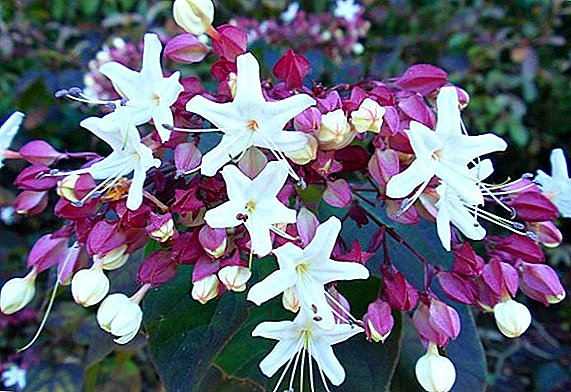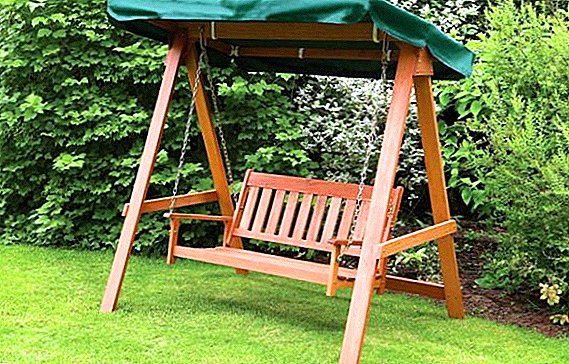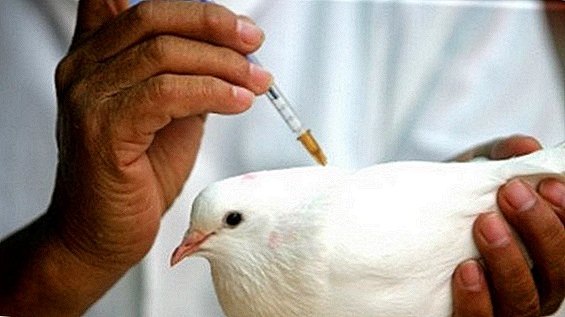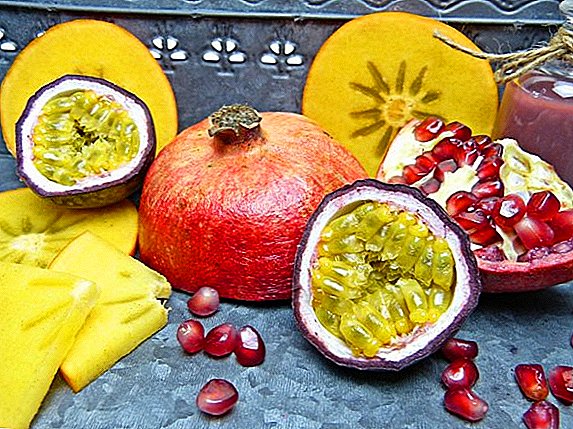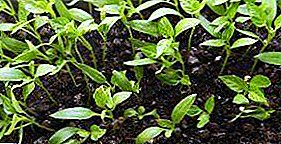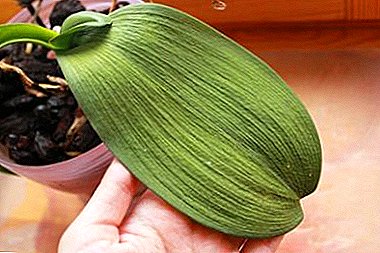
With proper care, orchids are pleased with flower growers with long flowering and powerful beautiful foliage.
Soft and lifeless leaves - a sign that the care of an exotic plant is broken.
So from what leaves the tropical culture wither and how to return the flower to a healthy look? We will talk more about this problem later in the article and tell you what to do in this case.
What is it like to look like?
Fading foliage - a natural phenomenon for orchids. You should not worry if the lower leaves wither - they will disappear after they give up their nutrients.
Attention! If a room orchid withers away all the leaves at once, it is necessary to take urgent measures! This is a clear sign of a flower disease.
An exotic plant urgently needs rehabilitation if its dense leaves lose their elasticity and natural bright color.
Why do leaves become sluggish?
Consider the reasons why the orchid or her children began to wilt leaves:
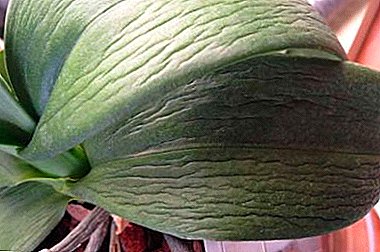 Root system overheating. Tropical flower loves warmth and light. But their overabundance is destructive for him. Too hot batteries or direct sunlight will cause the moisture to evaporate, the ground will overheat. As a result, supercooled roots will not be able to consume the liquid in the required volume, and the leaves and peduncle will not receive nutrients and will begin to wither and turn yellow.
Root system overheating. Tropical flower loves warmth and light. But their overabundance is destructive for him. Too hot batteries or direct sunlight will cause the moisture to evaporate, the ground will overheat. As a result, supercooled roots will not be able to consume the liquid in the required volume, and the leaves and peduncle will not receive nutrients and will begin to wither and turn yellow.- Too tight ground. To prevent the penetration of oxygen to the root system can poor-quality substrate. The soil is compacted due to constant watering, salt deposits, the appearance of fungus and mold. As a result, an exotic flower is not able to "breathe", because of which leaves and roots suffer.
Houseplant is recommended to regularly replant in a new soil.
- Low humidity. Overdried soil can destroy the orchid.Reference! There is no specific watering schedule. Exotic culture requires an individual approach. Only after inspecting and assessing the condition of the soil can water be judged. The soil should be moderately wet and loosened.
- High humidity. Waterlogging is bad for the health of the plant. One of the common causes of sluggish leaves in an orchid is stagnation of water in the tank. In the pan should always be dry. There must be holes in the flower pot. And the room where the flower is located must be periodically ventilated.
- Illiterate dressing. Fertilizing exotic flowers love. But here we need a measure. If the leaves begin to wither and turn yellow - this is one of the signs of over-feeding the plant.
- Pests. The appearance of pests is the most common cause of soft orchid leaves. The larvae of the click beetle damage young roots. In this case, the root system should be immediately washed, and then transplanted into a new soil flower.
- Frostbite. At temperatures below 16 degrees the flower just freezes. The leaves will become sluggish and lose elasticity. In this case, the room beauty must be moved to heat - without a sharp temperature drop.
- Stress. Soft and sluggish orchid leaves can become due to stress. For example, if the plant is only brought from the store. In this case, experts recommend providing an exotic flower with a state of rest, completely isolating it from other room inhabitants. You can not immediately put the plant in the sunlight. Protective forces can only be activated in the shade without watering.
What are the consequences for the plant?
 Soft leaves may indicate a variety of ailments or natural processes. It is very important to immediately respond to the first symptoms and assist the tropical plant. If you start the process of wilting - it will not be easy to save the flower.
Soft leaves may indicate a variety of ailments or natural processes. It is very important to immediately respond to the first symptoms and assist the tropical plant. If you start the process of wilting - it will not be easy to save the flower.
The consequences of the fading soft orchid leaves are very serious. It threatens the drying of the roots, the development of infectious diseases, rotting of the root system, impaired development, cessation of flowering, long-term adaptation.
What to do, step by step instructions
- Plant inspection. To determine the cause of withering leaves you need to inspect the plant.
- Removing orchids from the pot and inspecting the roots. Often, if the foliage of a houseplant changes color or structure, this indicates root problems. They are provoked by excessive moisture or stagnant water. To confirm the diagnosis you need to have a good look at the roots.
To this end, the flower is taken out of the pot, the root processes are released from the ground and are lowered into the water for ten minutes. After about three hours, when the plant is completely dry, you can assess the condition of the roots.
- Pruning rotten roots. Dark yellow rotting processes usually emit a liquid when pressed. Using a sterile sharp knife or secateurs, it is necessary to remove diseased roots to healthy tissue.
- Handling cutting place with special means. The wound that forms at the site of the cut must be immediately sanitized. For these purposes, powder of crushed charcoal or cinnamon is perfect.
Important! Do not handle cutting sites with alcohol-containing compounds.
- Putting the plant in a new pot and substrate. After the damaged elements of the root system are removed and the sections are processed, the flower is transplanted into a new substrate with moist soil. The bottom of the pot is covered with expanded clay and moss.
Prevention problems
 The best prevention of leaf diseases is the daily competent care and control of the state of exotic culture.
The best prevention of leaf diseases is the daily competent care and control of the state of exotic culture.
- The flower should not get direct sunlight. Lighting should be diffused. Duration of daylight hours - 14 hours.
- The optimum summer temperature is + 22-25ºС, in winter + 16-18ºС.
- Humidity 50-60%.
- The room must be constantly aired.
- Water once a week. The soil should dry out.
- Fertilize 2 times a month, especially during the flowering period.
- Spray up to 5 times a day. During the flowering period, the procedure is deleted.
The lack or excess of moisture, overheating of the plant, or diseases of the roots are the main reasons why the elastic orchid leaves suddenly lose their structure. If you do not take action - the plant will die. That is why constant monitoring of the state of the exotic beauty is so important.


 Root system overheating. Tropical flower loves warmth and light. But their overabundance is destructive for him. Too hot batteries or direct sunlight will cause the moisture to evaporate, the ground will overheat. As a result, supercooled roots will not be able to consume the liquid in the required volume, and the leaves and peduncle will not receive nutrients and will begin to wither and turn yellow.
Root system overheating. Tropical flower loves warmth and light. But their overabundance is destructive for him. Too hot batteries or direct sunlight will cause the moisture to evaporate, the ground will overheat. As a result, supercooled roots will not be able to consume the liquid in the required volume, and the leaves and peduncle will not receive nutrients and will begin to wither and turn yellow.
